
Roots
The whisper of water, a constant companion to our lives, holds a special resonance for those tending to textured hair. This conversation about mindful choices in hair care, particularly as they relate to water, reaches far beyond the simple act of cleansing. It calls upon us to consider the very origins of our strands, the delicate cellular structures that define their coil and curl, and the historical currents that have shaped our practices.
To truly honor our hair and the planet, we must first look to these foundations, understanding the inherent characteristics of textured hair and its unique relationship with hydration. It is within this elemental understanding that we find the initial steps toward practices that serve both beauty and ecological balance.
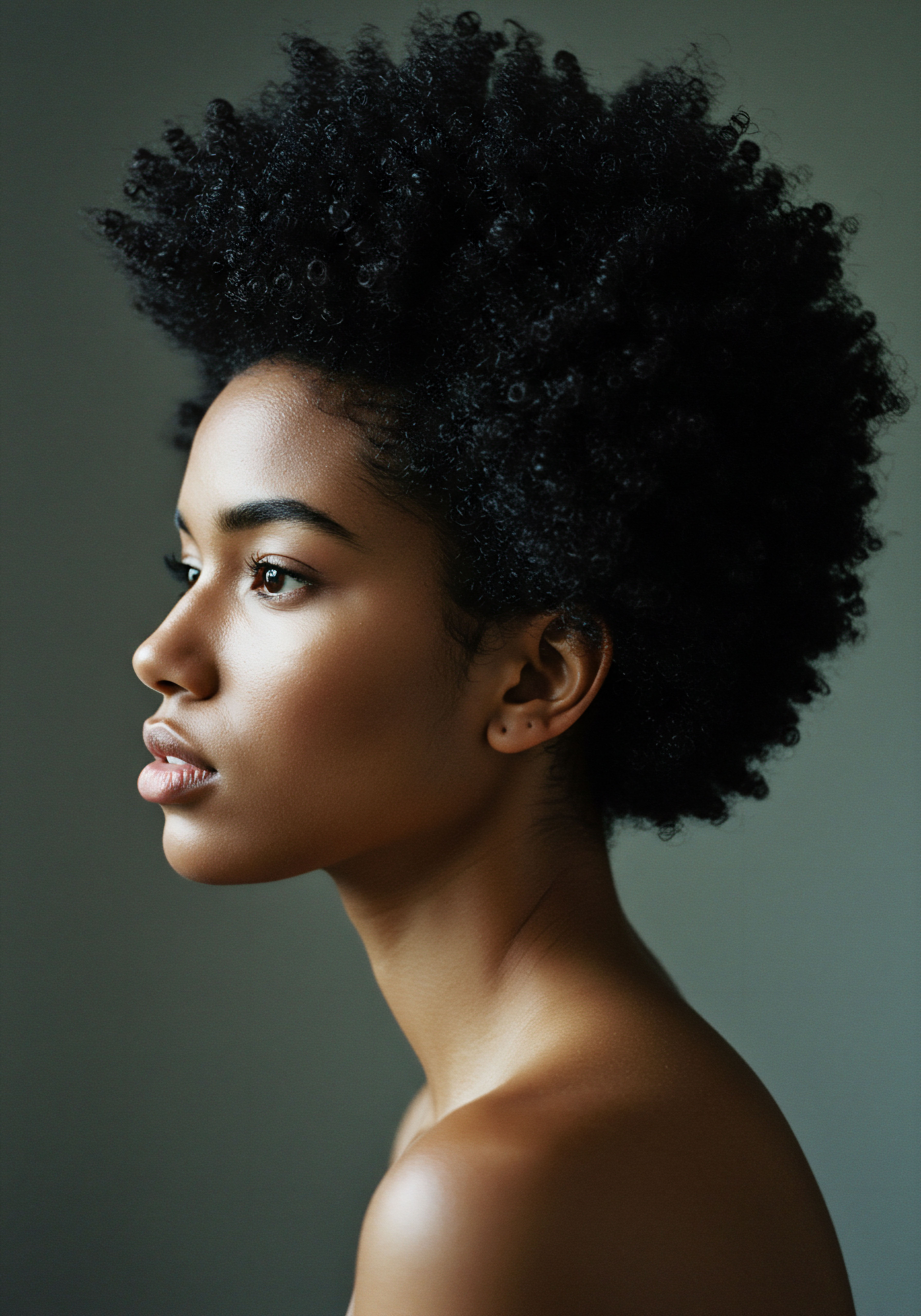
The Architecture of Textured Hair
Textured hair, whether coily, curly, or wavy, possesses an anatomical distinction that directly influences its interaction with water. Unlike straight strands, which often have a more uniform, cylindrical shape, textured hair presents an elliptical or flattened cross-section. This unique geometry means the cuticle, the outermost layer of the hair shaft, does not lie as flat. Instead, its scales are often slightly raised, creating more surface area.
This characteristic contributes to the hair’s inherent ability to absorb moisture from the air, a phenomenon often experienced as frizz in humid conditions. However, it also means textured hair can release moisture more readily, leading to a tendency towards dryness.
Consider the microscopic landscape of a single strand. The cuticle, composed of overlapping cells, acts as a protective shield. Beneath it lies the cortex, which provides strength and elasticity, and at the very core, the medulla. The natural oils produced by the scalp, known as sebum, travel down the hair shaft.
On straight hair, sebum can glide easily, coating the strand and offering natural lubrication. For textured hair, the twists and turns of the strand create barriers, making it more challenging for sebum to distribute evenly from root to tip. This often leaves the ends particularly susceptible to dryness, demanding external hydration and sealing.
Understanding the unique structure of textured hair is the initial step toward choices that respect its natural inclination for hydration and its delicate relationship with water.

The Essential Lexicon of Textured Hair
A common language allows us to speak with precision about our hair and its needs. Familiarity with specific terms deepens our care approach.
- Porosity ❉ This term describes your hair’s ability to absorb and hold moisture. High porosity hair, with its more open cuticle, readily takes in water but also loses it quickly. Low porosity hair, with a tightly closed cuticle, resists water absorption but retains moisture once it penetrates. Medium porosity hair strikes a balance. Knowing your hair’s porosity guides product selection and water temperature choices.
- Density ❉ This refers to the number of individual hair strands on your scalp. High density hair appears thick, while low density hair may seem sparse. This characteristic influences how much product is needed and how long hair takes to dry, directly impacting water usage.
- Elasticity ❉ The hair’s ability to stretch and return to its original shape without breaking. Healthy hair possesses good elasticity, indicating sufficient protein and moisture balance. When hair lacks elasticity, it may feel brittle and break easily, signaling a need for gentler handling and appropriate conditioning, often involving water-based products.

Water’s Role in Hair Wellness
Water is the primary hydrator for hair. While oils and butters seal in moisture, they do not provide it. The sensation of dry hair often stems from a lack of water within the hair shaft itself. Textured hair, given its structural characteristics, thrives when properly hydrated.
This means not only external application of water but also ensuring the hair’s ability to retain that water. The choices we make about washing frequency, rinsing techniques, and product types directly influence this delicate equilibrium.
Consider the profound impact of water quality. Hard water, rich in minerals like calcium and magnesium, can build up on hair strands, leading to dullness, dryness, and reduced product efficacy. This mineral coating can hinder moisture absorption and make hair feel rough.
Soft water, conversely, allows products to lather more easily and rinse cleaner, potentially reducing the amount of water needed for effective cleansing. An awareness of local water conditions can inform decisions about filtration or specific clarifying treatments, contributing to healthier hair and more efficient water use.

Ritual
As we move from the foundational understanding of textured hair, our attention shifts to the daily and weekly practices that shape its vitality. The way we engage with our hair, the methods we employ, and the tools we select all form a personal ritual. This section guides us through practical wisdom, exploring how these deliberate choices can both honor the unique qualities of textured hair and contribute to a more mindful relationship with water. We step into a space where technique meets intention, where each pour and rinse holds significance.
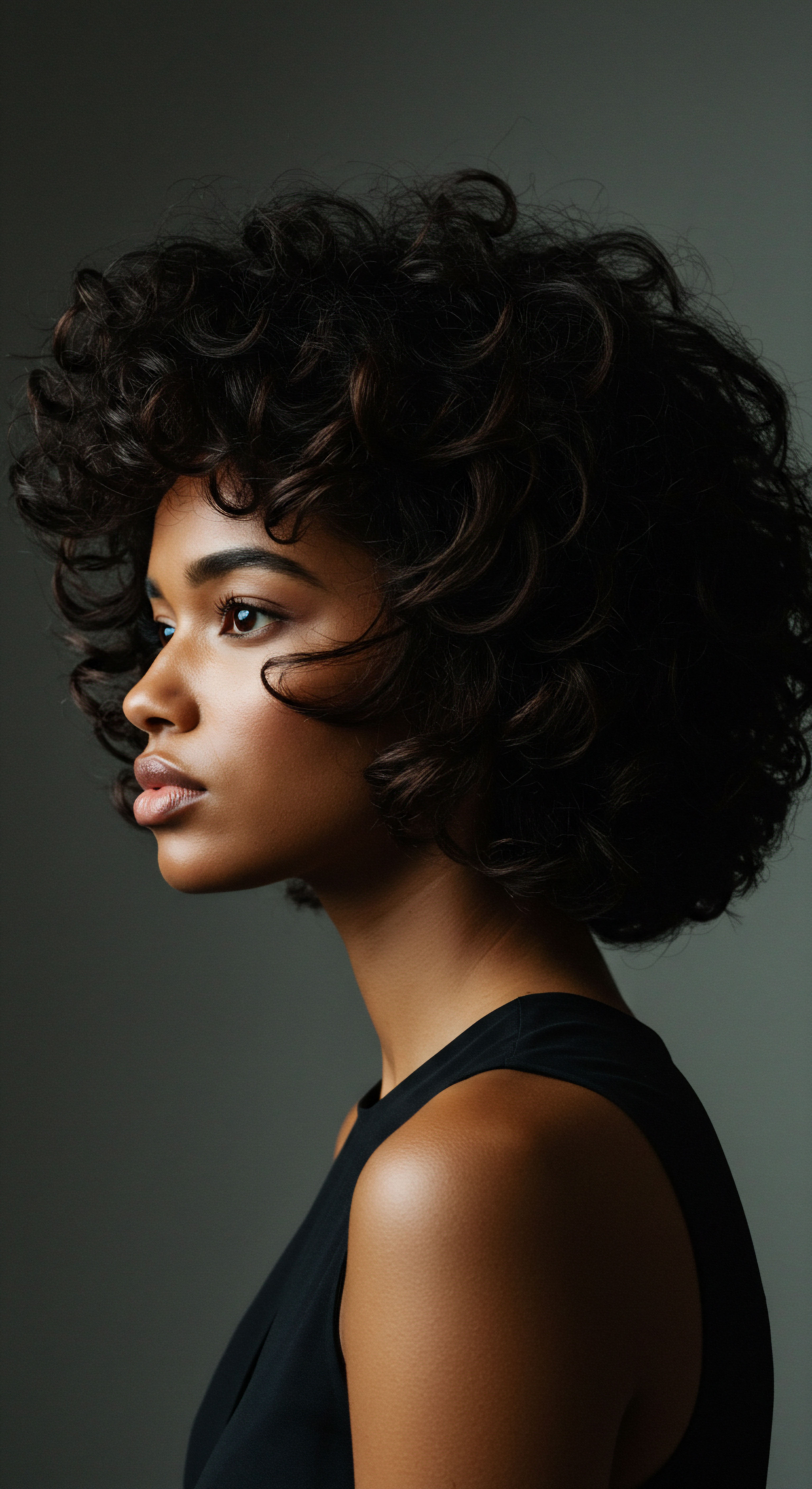
Mindful Cleansing for Water Conservation
Cleansing is a cornerstone of hair care, yet it is often the most water-intensive step. For textured hair, which benefits from retaining its natural oils, frequent shampooing can be counterproductive, leading to dryness and breakage. Shifting washing frequency can dramatically reduce water consumption.
Many with textured hair find a washing schedule of once every week or two, or even longer, perfectly suitable. This less frequent approach respects the hair’s need for its natural sebum while significantly decreasing the amount of water used over time.
When it is time to cleanse, the method matters. Pre-pooing, applying an oil or conditioner before shampoo, helps protect the hair from excessive stripping and makes detangling easier under water. This can reduce the time spent rinsing and the overall volume of water required.
Furthermore, opting for concentrated shampoos or solid shampoo bars minimizes the water content in the product itself and often reduces the amount of water needed for rinsing. These formulations typically contain less water, making them more potent and requiring less product per wash.

How Can We Optimize Rinsing to Save Water?
Rinsing is often the longest phase of a hair wash, consuming substantial amounts of water. A mindful approach begins with turning off the water while applying shampoo and conditioner. While this seems straightforward, many maintain a continuous flow. Short bursts of water for wetting and rinsing can be remarkably effective.
Consider the temperature of the water. While warm water helps open the cuticle for cleansing and conditioning, a final rinse with cooler water can help seal the cuticle, promoting shine and reducing frizz. This cooler rinse can also be quicker, further minimizing water use. For those with long or dense textured hair, sectioning the hair before washing and rinsing ensures that products are distributed evenly and rinsed out thoroughly without needing prolonged exposure to running water.
Conscious choices in cleansing frequency and rinsing techniques are powerful ways to conserve water without compromising the health of textured hair.

Conditioning and Styling with Water in Mind
Conditioning is vital for textured hair, providing slip for detangling and infusing moisture. Leave-in conditioners, which are not rinsed out, offer an excellent way to hydrate hair without additional water consumption during the routine. When using rinse-out conditioners, allowing them to sit for the recommended time after turning off the water can be effective.
Styling practices also play a role in water conservation. Many textured hair styles, particularly protective styles like braids, twists, or cornrows, require less frequent washing and manipulation, thereby reducing water use over extended periods. Even styles that rely on water for definition, such as wash-and-gos, can be approached with water efficiency. Using a spray bottle to re-wet hair for styling, rather than a full shower, is a simple yet impactful adjustment.
| Habit Washing hair less often |
| Impact on Water Use Significantly reduces overall water consumption over time. |
| Habit Turning off water during product application |
| Impact on Water Use Directly saves gallons per wash. |
| Habit Using concentrated or solid products |
| Impact on Water Use Reduces water in product manufacturing and often rinsing. |
| Habit Final cool water rinse |
| Impact on Water Use Promotes cuticle closure and can shorten rinse time. |
| Habit Styling with a spray bottle |
| Impact on Water Use Minimizes water needed for daily style refreshment. |
| Habit Small adjustments in daily routines yield considerable water savings. |

Product Choices and Water Consciousness
The products we select hold implications for water beyond our shower. The production of hair care products themselves consumes water. Opting for brands committed to sustainable manufacturing, reduced water footprints, and waterless formulations contributes to a larger ecological effort. Waterless shampoos and conditioners, often in bar or powder form, eliminate the need for water as a primary ingredient, thus reducing the water required in their creation and transport.
Moreover, the ingredients within products affect water quality upon rinsing. Chemicals such as sulfates and parabens, commonly found in traditional hair care products, can pollute waterways once they enter the drainage system. Choosing products with biodegradable ingredients and those free from harsh chemicals lessens the burden on wastewater treatment systems and protects aquatic environments. This careful consideration extends the mindful choice beyond personal use to the broader ecological system.

Relay
The journey of mindful textured hair care, interwoven with water conservation, extends beyond personal practice to touch upon deeper societal and environmental currents. This section broadens our view, inviting a reflection on the scientific implications of our choices, the echoes of ancestral wisdom, and the collective responsibility we hold for our planet’s most precious resource. We consider how our individual actions resonate within larger systems, from global water cycles to the cultural expressions of beauty.
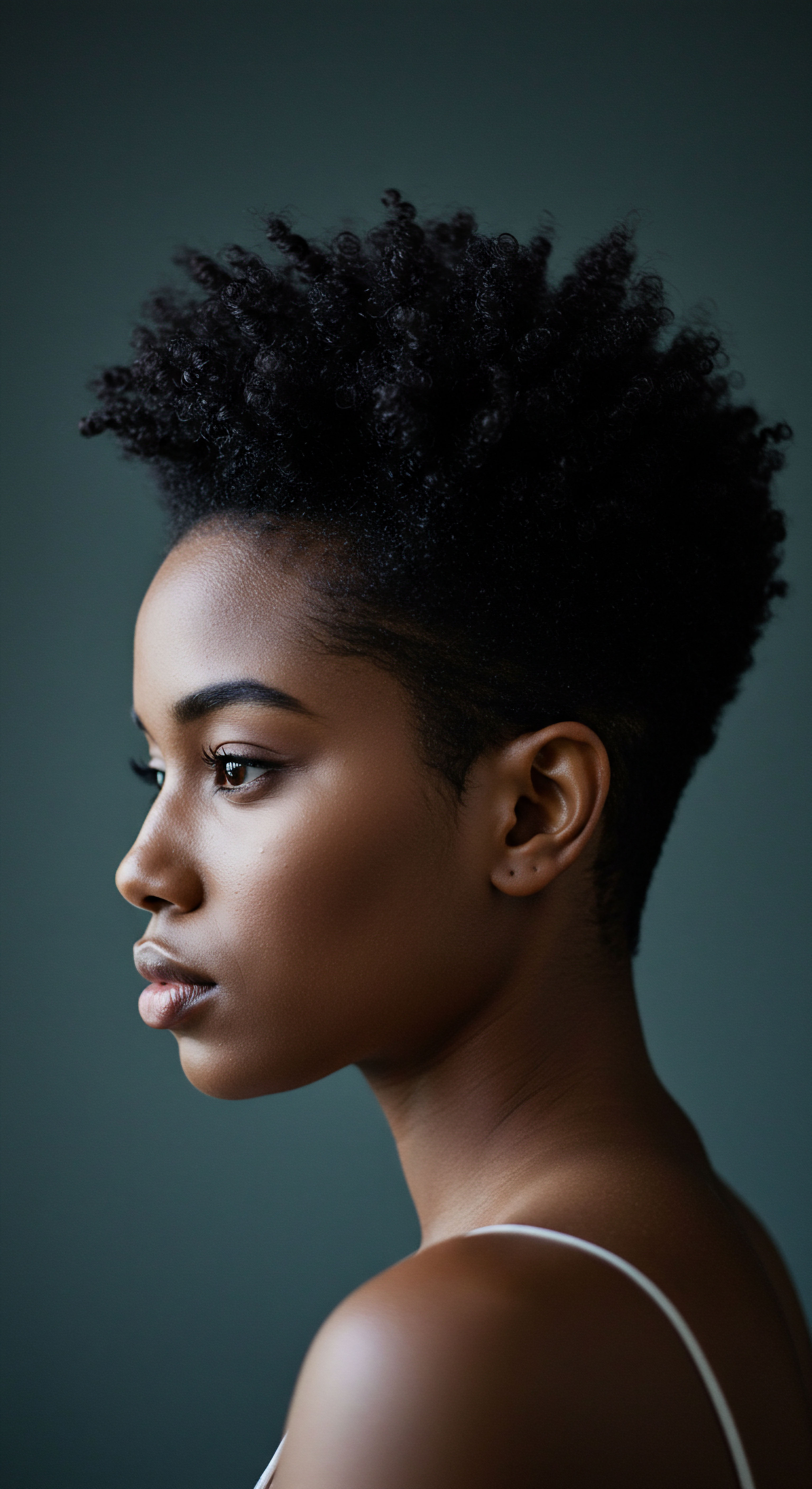
The Hidden Water Footprint of Hair Care
While the running water in our showers is visibly consumed, a significant portion of hair care’s water footprint remains unseen, embedded in the life cycle of the products themselves. This concept, known as the “hidden water footprint” or “virtual water,” accounts for the water used in ingredient cultivation, manufacturing, and transportation. A study by Kröhnert and Stucki (2021) on a plant-based shampoo revealed that while ingredient production certainly requires water, the consumer’s use phase is often the most impactful stage for overall environmental burdens, including water consumption and the energy needed to heat it. This research highlights that even for a single hair wash, approximately 15 liters of warm water can be attributed to the use phase.
This figure, while specific to one study, underscores a broader truth ❉ our daily routines contribute substantially to the environmental impact of hair care. Indeed, across various studies, the use phase can account for a dominant portion, often 60% to 90%, of a shampoo or conditioner’s total water footprint and carbon emissions, largely due to the energy required for heating water.
This data point presents a challenge ❉ how do we shift ingrained habits that have such a considerable cumulative effect? The emphasis often falls on the individual, yet the beauty industry also bears a responsibility. Companies are beginning to respond by developing waterless products, concentrated formulas, and those designed for faster rinsing, all aimed at reducing water consumption during the consumer phase. This systemic shift, driven by both consumer demand and corporate innovation, is a crucial relay in the race for water sustainability.

How Do Ancient Practices Inform Modern Water Wisdom?
Long before the advent of modern plumbing and bottled products, communities around the world developed sophisticated hair care practices deeply connected to local resources and ecological awareness. These ancestral methods, often passed down through generations, frequently prioritized minimal water usage and reliance on natural, locally available ingredients. For instance, in various African cultures, hair care often centered on protective styles and the application of nourishing butters and oils, which inherently reduced the need for frequent washing with large volumes of water. The use of certain plant-based cleansers that required less rinsing, or techniques like “dry shampooing” with powders, also exemplify this inherent water consciousness.
Consider the tradition of rice water rinses in East and Southeast Asian cultures, practiced for centuries by groups like the Yao women of China and the geishas of Japan. While providing conditioning benefits, these rinses often involved smaller quantities of water than a full wash, and the water itself was repurposed from cooking rice, a practice of circularity. These historical examples serve as a potent reminder that effective hair care does not necessarily equate to abundant water use. They challenge us to reconsider our assumptions about cleansing frequency and the role of water in our routines, offering a rich source of inspiration for contemporary water-saving strategies.
The collective impact of daily routines, when viewed through the lens of hidden water footprints, reveals a profound opportunity for mindful change.

The Interconnectedness of Hair Care, Water Quality, and Environmental Health
The water we use for our hair does not simply vanish; it returns to the environment, often carrying residues from our products. The journey of wastewater from our homes to treatment plants and back into natural ecosystems creates a critical link between our personal choices and broader environmental health. Chemicals like sulfates, silicones, and synthetic fragrances, common in many conventional hair products, can pose challenges for wastewater treatment and may negatively impact aquatic life. Sulfates, for instance, contribute to the acidification of surface water and soil, harming ecosystems and aquatic flora and fauna.
The beauty industry’s water footprint extends to the very ingredients. For example, some natural ingredients like almonds are incredibly water-intensive to cultivate, requiring up to 3 gallons (11 liters) of water to grow a single almond. This underscores the importance of scrutinizing not just our usage habits, but also the supply chains of the products we choose. Supporting brands that prioritize sustainably sourced ingredients, reduce water in manufacturing, and develop biodegradable formulas contributes to a healthier water cycle overall.
The shift towards water-conscious hair care is not merely about individual virtue; it is a necessary adaptation to a world facing increasing water scarcity. By integrating scientific understanding of water footprints with the wisdom of traditional practices, and by advocating for industry-wide shifts towards more sustainable product life cycles, we participate in a relay of responsibility. Each thoughtful choice, from how often we wash to the products we select, contributes to a more sustainable future for both our hair and the precious blue of our planet.
- Waterless Formulations ❉ Products designed without water as a primary ingredient reduce manufacturing water use and transportation carbon.
- Biodegradable Ingredients ❉ Choosing products with components that break down harmlessly in water minimizes environmental pollution upon rinsing.
- Reduced Washing Frequency ❉ Extending the time between washes significantly lowers personal water consumption over a year.
- Efficient Rinsing Techniques ❉ Turning off water during product application and using targeted rinsing methods conserves water during the use phase.
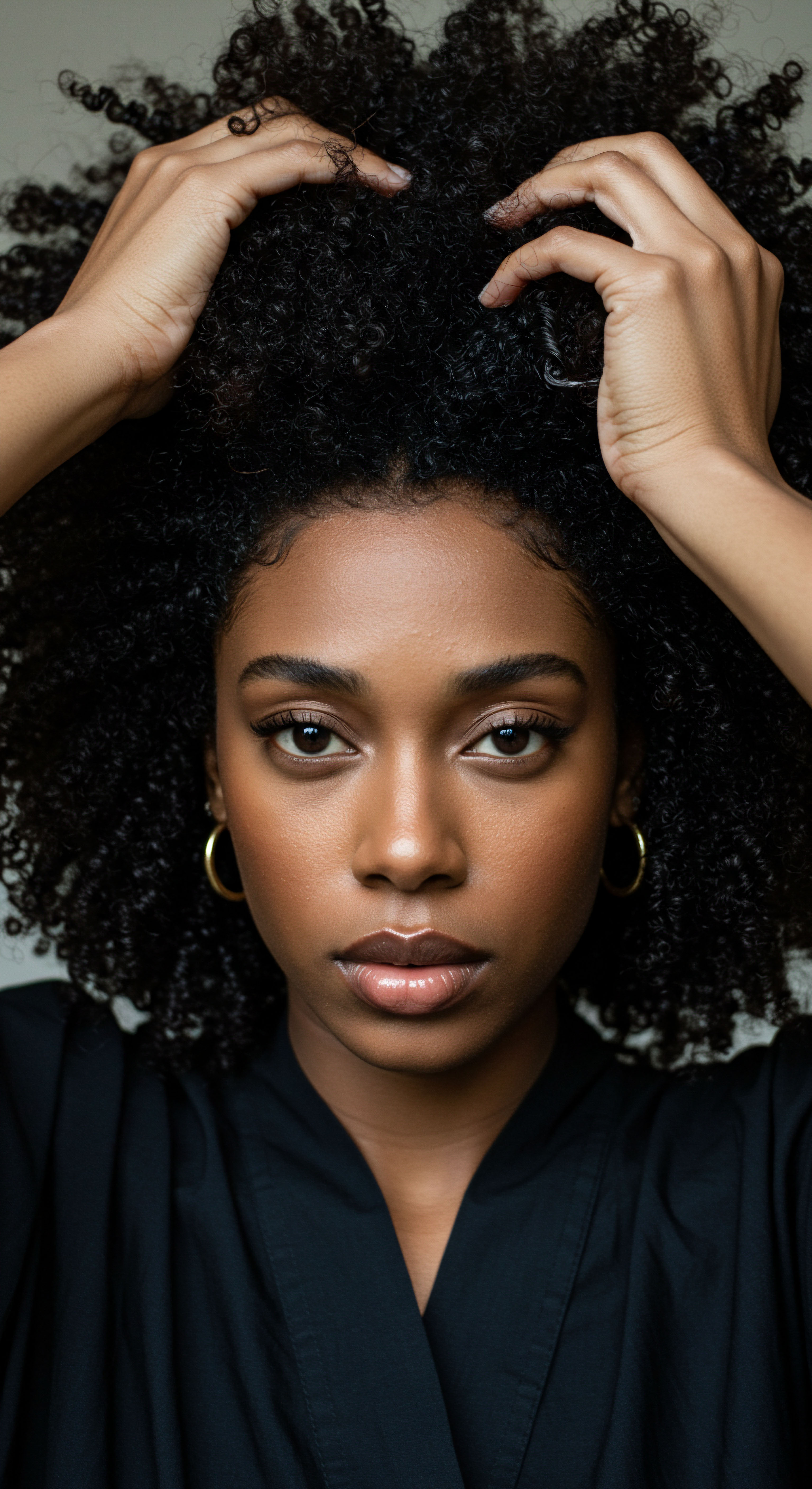
Reflection
As the final drops of water cascade, leaving hair refreshed and cared for, we are invited to pause. This exploration into mindful choices for textured hair, while protecting water, has unveiled layers of connection—from the microscopic architecture of a strand to the vast, shared waters of our planet. It is a reminder that beauty rituals are not isolated acts but living traditions, capable of evolving with greater awareness.
The gentle touch of hands on hair, the rhythm of a wash, the thoughtful selection of a product—each carries the potential for a deeper reverence, not only for ourselves but for the delicate balance of the world that sustains us. May our daily care become a quiet affirmation of this interconnectedness, a soft yet resolute commitment to harmony.
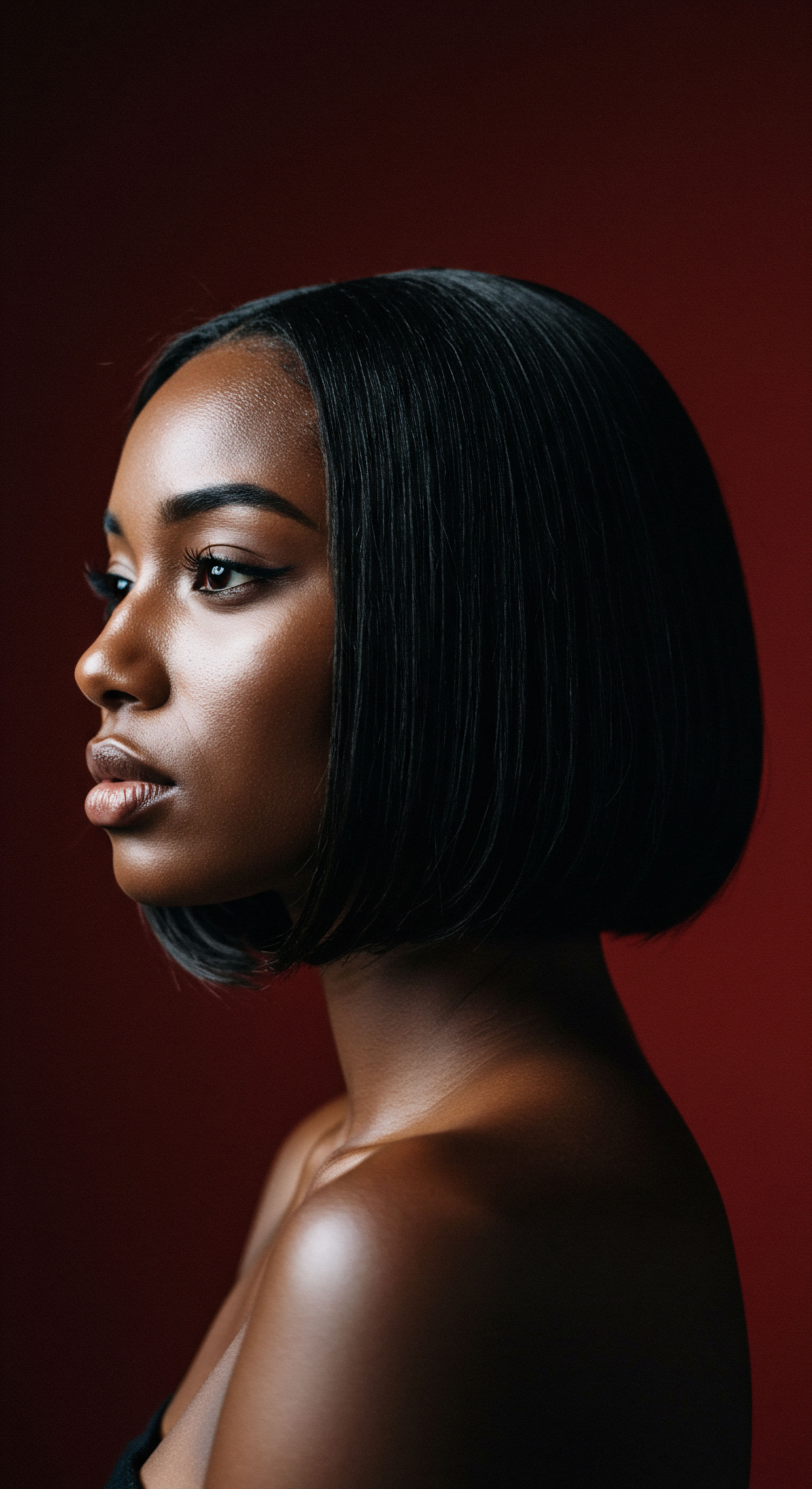
References
- Kröhnert, H. & Stucki, M. (2021). Life Cycle Assessment of a Plant-Based, Regionally Marketed Shampoo and Analysis of Refill Options. Sustainability, 13(15), 8478.
- Stelmach, R. & Clasen, T. (2015). Household water quantity and health ❉ a systematic review. International Journal of Environmental Research and Public Health, 12(6), 5954-5972.
- Oğur Aydın, D. & Doğan, Ç. (2022). Exploring water-consuming personal care and hygiene practices in the bathroom environment and user intentions for improving effective water consumption. Journal of Design, Business & Society, 8(2), 173-195.
- Syensqo. (2022, December 8). Sustainable hair care products that save water .
- Lebubè. (2024, March 22). The Beauty Industry’s Water Footprint & Sustainable Solutions .
- Dutch Health Store. (2025, May 15). The hidden water footprint of Shampoo .
- Cosmetics Europe. (n.d.). Environmental Sustainability .
- L’Oréal Paris. (2024, February 27). Transparency on the Environmental Impact of our Products .
- ResearchGate. (2025, April 21). Life Cycle Assessment of a Plant-Based, Regionally Marketed Shampoo and Analysis of Refill Options .
- CleanHub’s Blog. (2024, November 5). What is the Environmental Impact of the Beauty Industry? .
- Clinikally. (2024, March 1). The Revolution in Hair Care ❉ Exploring Waterless Products .
- BioOne Complete. (2020, January 1). Characterization of Beauty Salon Wastewater from Kwame Nkrumah University of Science and Technology, Kumasi, Ghana, and Its Surrounding Communities .
- Quora. (2020, July 20). I’m black with level 4-A hair. How often a week should I wash my hair? I’ve understood that African Americans require oils in their hair, and it should not be washed as often and frequently as Caucasian hair.
- Reddit. (2021, August 26). No raw oils and butters vs. Traditional African hair care? ❉ r/Naturalhair .
- Yonkers Times. (2024, May 22). The Historical Use of Rice Water in Hair Care Across Cultures .